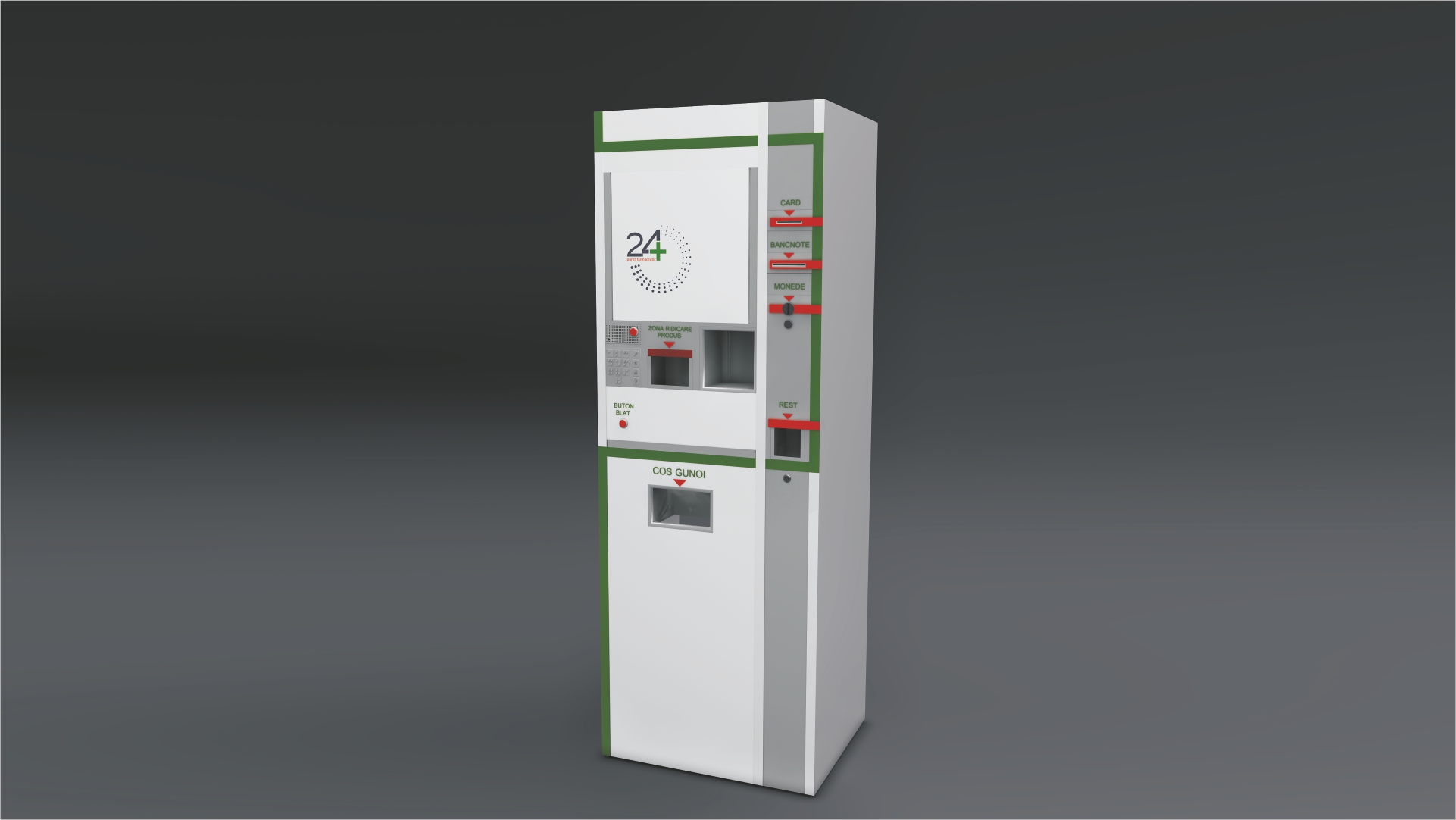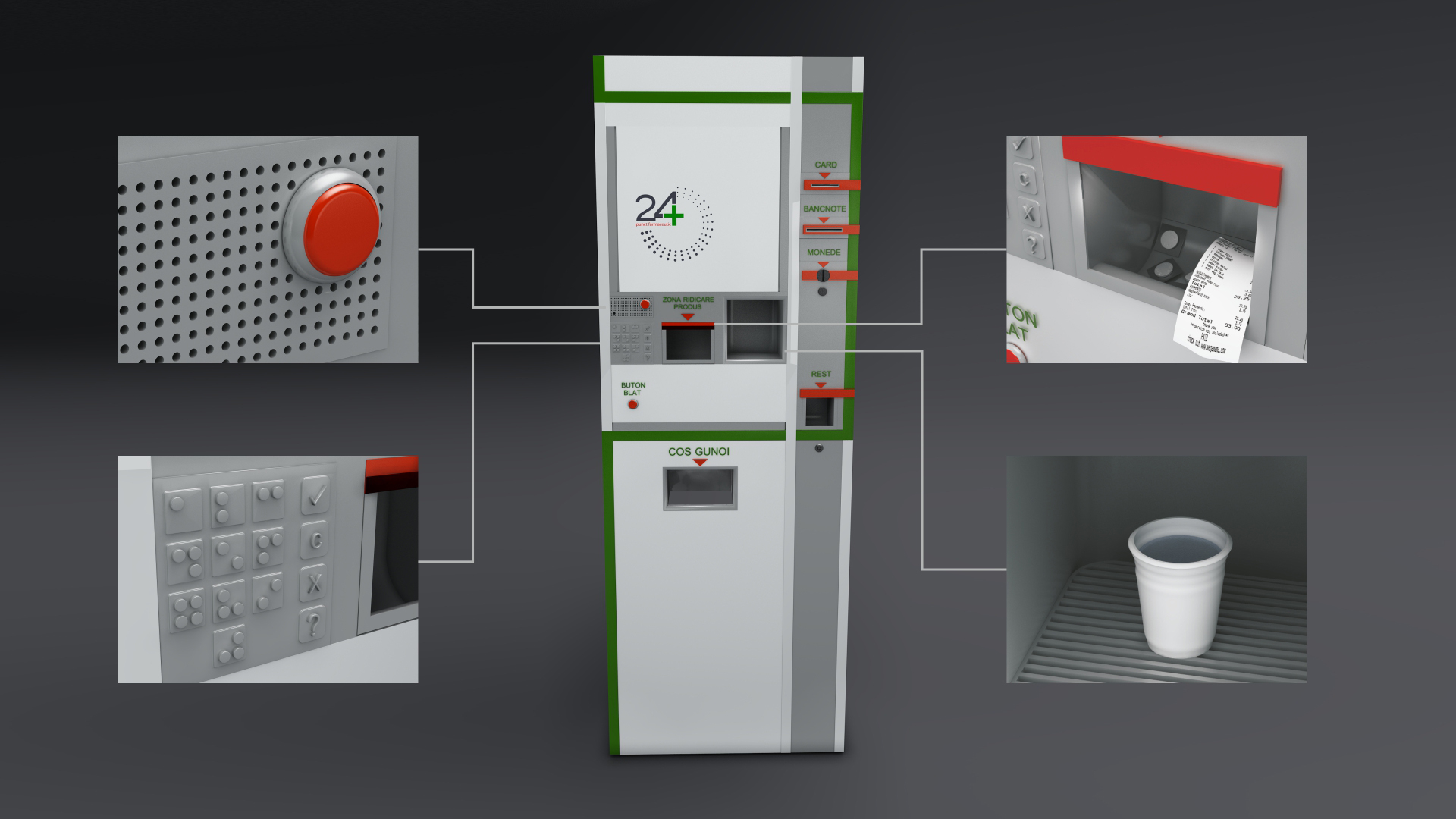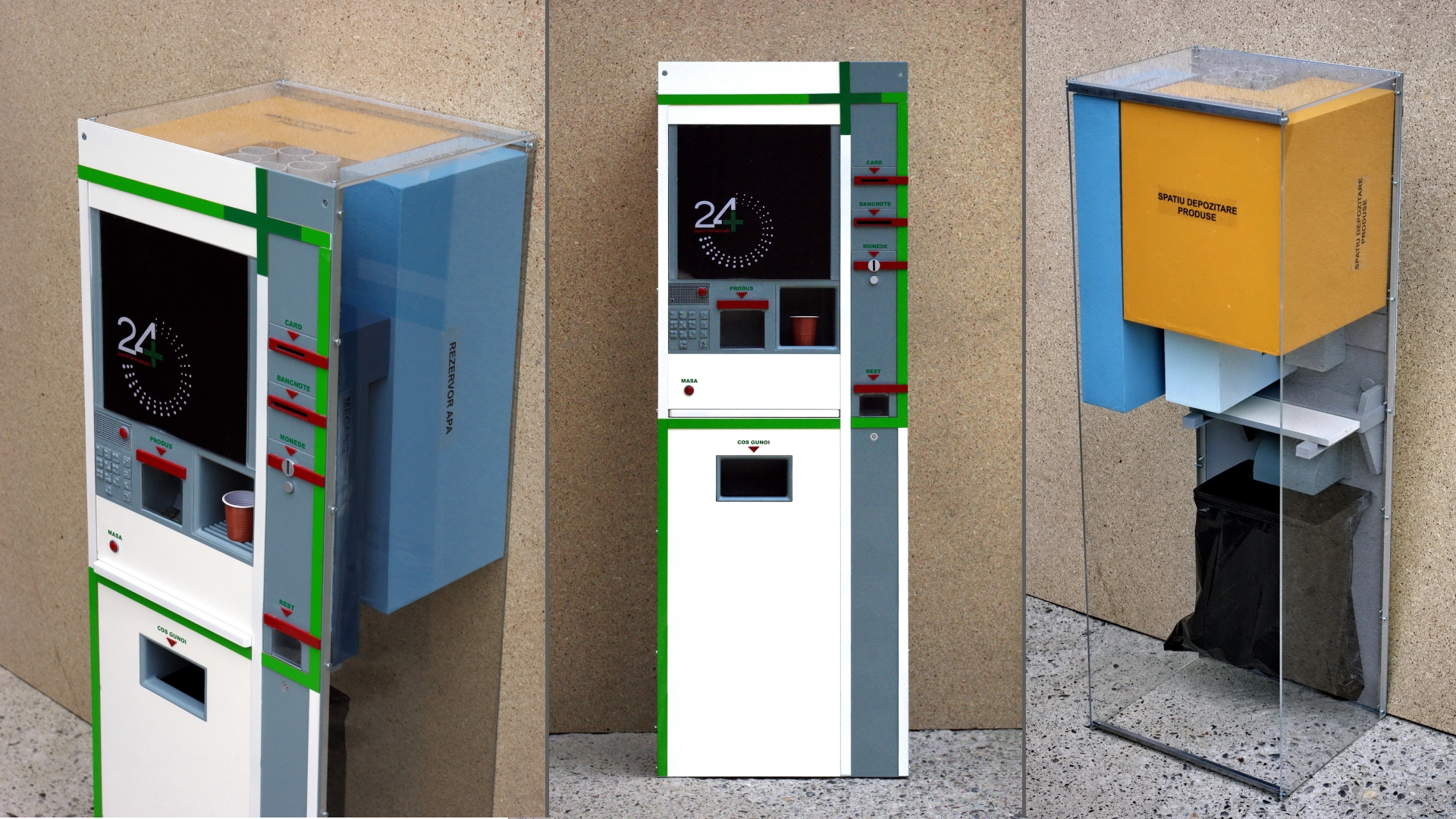
Year: 2010
Brief: bachelor thesis (invention)
Status: concept
The idea of creating a vending machine for minor pharmaceutical emergencies comes from the very need of purchasing medicines at inopportune times: at night (when very few pharmacies are open) or during long journeys (especially by train, etc.).
Following a limited study of consumers, about 80% stated that they encountered medical problems in unfavourable contexts: tooth or head ache, abdominal or stomach cramps etc.
Placement of the vending machine: outdoors (flush mounted in the wall of pharmacies) and indoors (especially in trains, buses and in commercial areas or stations).
Products purchased from the machine: only dispenses products that do not require a medical prescription: pharmaceutical products and para-pharmaceutical products (plasters, condoms, facial tampons etc.).
Ways to purchase the products: by creating a card (granted by the National Health Insurance Agency) that allows access to the machine or by entering the CNP or creating a PIN code. It is necessary that all users (persons over 18 years of age) are previously registered in a database that include the medical history of the patients and allows the monitoring of the purchases they make at the machine. Thus, if the patient is not allowed to consume a type of medication, access to that type of product should be prohibited. Also, the access of people who try to procure the same tablet from the same machine or another within a limited time interval should be denied.
The structure of the vending machine: must contain: a software (easy to use starting from the patient’s condition, an anti-reflective touch screen/display, an exterior case and several units (which includes a space for storing pills (they must be protected from a certain temperature, humidity, light), buttons, a payment mechanism, a minicomputer, a mechanism for issuing a sheet / receipts with pharmaceutical indications, a rest or card return mechanism, a water dispenser and disposable cups, a table / a counter and a cut-out in the front (foot room for people in wheelchairs).
Accessing the vending machine: must be intuitive, must be performed with one hand, does not require twisting of the waist, should be designed at optimal dimensions for all its users, must contain audio software, must create keypads with the specific shape for their function, should provide feedback (auditory and tactile) and prevent the use of minors or any act of vandalism.
The proposed vending machine: stands out among street furniture, it has a coherent appearance, is easy to use, compact, divided into registers according to functions (payment area and pick-up area) and has a color that suggests the pharmaceutical purpose of the product.








